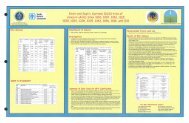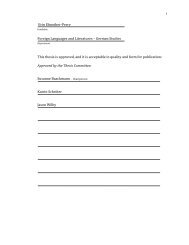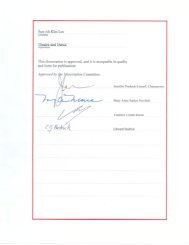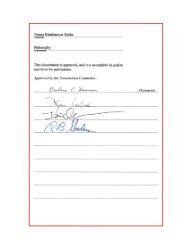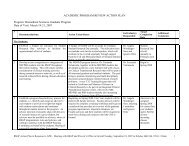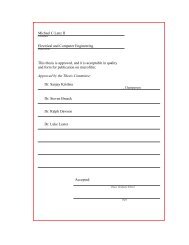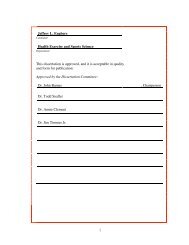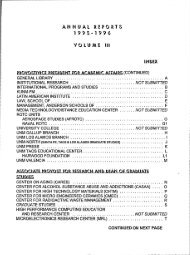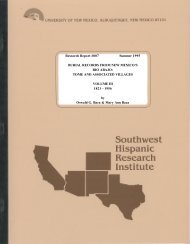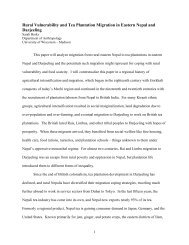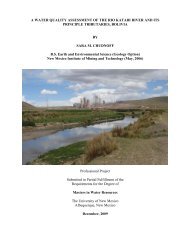Selective Salt Recovery from Reverse Osmosis Brine - University of ...
Selective Salt Recovery from Reverse Osmosis Brine - University of ...
Selective Salt Recovery from Reverse Osmosis Brine - University of ...
Create successful ePaper yourself
Turn your PDF publications into a flip-book with our unique Google optimized e-Paper software.
action equation including activities. The activities in the solution phase were estimated<br />
using the Bromley [21] method and resin phase activities were estimated using the<br />
Wilson model [22]. The column was divided into equally sized elements in which a mass<br />
balance equation including bed density, interstitial velocity, axial dispersion mass transfer<br />
coefficient, total voidage, time and space was included. The equation also included mass<br />
transfer terms for the external liquid film and the inside <strong>of</strong> a particle <strong>of</strong> resin. Mass<br />
transfer was modeled as having two distinct parts, 1) the movement <strong>of</strong> ions <strong>from</strong> the bulk<br />
phase through liquid film and 2) the diffusion <strong>of</strong> ions into the micro-pores <strong>of</strong> the resin.<br />
The exchange reaction itself was considered to be instantaneous. The finite volume<br />
method was used to solve the mass balance equations. His results matched well to<br />
experimental data <strong>of</strong> ion exchange columns in which zinc was exchanged for sodium. He<br />
concluded that the initial stage <strong>of</strong> mass transfer is controlled mainly by film resistance but<br />
the overall mass transfer process is inter-particle resistance.<br />
Nakamura [23] modeled a column containing a hydrogen-sodium-ammonia system.<br />
He defined selectivity in terms <strong>of</strong> molarity and divided the column in equal volume<br />
segments. In his model, total resin capacity and selectivity were determined as fitting<br />
parameters, and he found that the exchange rate depended on the overall liquid phase<br />
mass transfer coefficient and the surface area <strong>of</strong> particle. Film diffusion resistance was<br />
found to control the overall rate <strong>of</strong> mass transfer.<br />
Another application <strong>of</strong> the mass action law to model <strong>of</strong> ion exchange in a fixed bed<br />
column was put forth by Borba et et [24]. This model considered thermodynamic<br />
equilibrium at the liquid-solid interface, the external mass transfer resistance and internal<br />
diffusion resistance (in series), and the concentration pr<strong>of</strong>ile within pores described by<br />
linear driving force (LDF) to predict ion exchange capacity. The column was divided<br />
into equal volume segments and the following calculations were completed for each<br />
segment using the finite volume method: liquid phase mass balance, external film mass<br />
transfer, liquid phase charge balance, diffusion <strong>of</strong> species within particles, resin phase<br />
charge balance, and mass balance between external mass transfer and diffusion mass<br />
transfer. The Langmuir and the mass action law <strong>of</strong> equilibrium were compared to see<br />
which fit the data better, and both were found to fit the data well. A column model<br />
17



